#william sleigh
Explore tagged Tumblr posts
Text

#my post#Christmas#Winter Wonderland#Andy Williams#sleigh bells ring#a beautiful sight we're happy tonight#classic#my music#catalisst#Spotify
7 notes
·
View notes
Text

Mrs Claus is very kind you know.
She likes to see Santa go out on Christmas eve,
with that special happiness glow.
Now Santa dear, tuck in your shirt and brush your teeth
and drive calmly in your sleigh filled with toys for the children
you must carefully reach ... Mrs Claus
#Mrs Claus#kind#Sant#happiness#Christmas eve#special glow#sleigh#toys#children#kids#presents#merry Christmas#Ho Ho Ho#Europes#]Asia#world#australia#tumblr#nature#william#america
3 notes
·
View notes
Text
Paul Roberts (Projex) and Michael of Nuance "christmas dance mix" (1993)
Note: This is a medley of several Christmas-related songs. The ones we could identify are…
James Pierpont - "The One Horse Open Sleigh" ("Jingle Bells")
Various Artists - "The Twelve Days of Christmas"
Jona Lewie - "Stop the Calvary"
William Sandys, Davies Gilbert - "The First Noel"
… we're not very well-versed in Christmas music.
#music#traditional music#James Pierpont#One Horse Open Sleigh#Jingle Bells#1850#1857#various artists#Twelve Days of Christmas#1780#1909#Jona Lewie#Stop the Calvary#1980#William Sandys#Davies Gilbert#The First Noel#1879#1823#1833#and others#medley#tracked music#module music#ProTracker#MOD#dance mix#Christmas music#dance music#blogger comments
4 notes
·
View notes
Text
youtube
All I Want For Christmas - Mariah Carey Let It Snow! Let It Snow! Let It Snow! - Dean Martin Sleigh Ride - The Ronettes Rockin' Around The Christmas Tree - Brenda Lee It's The Most Wonderful Time Of The Year - Andy Williams It's Beginning To Look A Lot Like Christmas - Michael Buble Jingle Bell Rock - Bobby Helms Last Christmas - Wham!
#Music#All I Want For Christmas#Mariah Carey#Let It Snow! Let It Snow! Let It Snow!#Dean Martin#Sleigh Ride#The Ronettes#Rockin' Around The Christmas Tree#Brenda Lee#It's The Most Wonderful Time Of The Year#Andy Williams#It's Beginning To Look A Lot Like Christmas#Michael Buble#Jingle Bell Rock#Bobby Helms#Last Christmas#Wham!#Youtube
0 notes
Photo
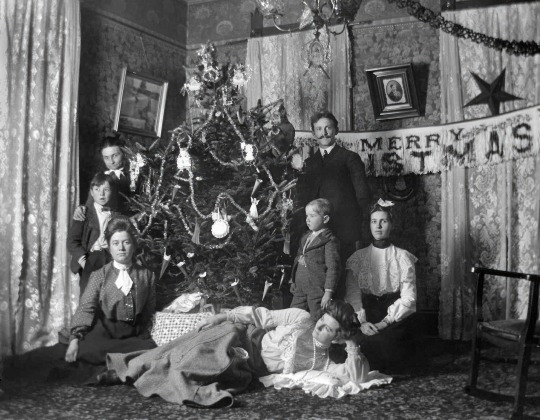
The history of Christmas traditions kept evolving throughout the 19th century, when most of the familiar components of the modern Christmas including St. Nicholas, Santa Claus, and Christmas trees, became popular. The changes in how Christmas was celebrated were so profound that it's safe to say someone alive in 1800 would not even recognize the Christmas celebrations held in 1900.
Washington Irving and St. Nicholas
Early Dutch settlers of New York considered St. Nicholas to be their patron saint and practiced a yearly ritual of hanging stockings to receive presents on St. Nicholas Eve, in early December. Washington Irving, in his fanciful History of New York, mentioned that St. Nicholas had a wagon he could ride “over the tops of trees” when he brought “his yearly presents to children.”
The Dutch word “Sinterklaas” for St. Nicholas evolved into the English “Santa Claus,” thanks in part to a New York City printer, William Gilley, who published an anonymous poem referring to “Santeclaus” in a children’s book in 1821. The poem was also the first mention of a character based on St. Nicholas having a sleigh, in this case, pulled by a single reindeer.
Clement Clarke Moore and The Night Before Christmas
Perhaps the best-known poem in the English language is “A Visit from St. Nicholas,” or as it’s often called, “The Night Before Christmas.” Its author, Clement Clarke Moore, a professor who owned an estate on the west side of Manhattan, would have been quite familiar with the St. Nicholas traditions followed in early 19th century New York. The poem was first published, anonymously, in a newspaper in Troy, New York, on December 23, 1823.
Reading the poem today, one might assume that Moore simply portrayed the common traditions. Yet he actually did something quite radical by changing some of the traditions while also describing features that were entirely new.
For instance, the St. Nicholas gift giving would have taken place on December 5, the eve of St. Nicholas Day. Moore moved the events he describes to Christmas Eve. He also came up with the concept of “St. Nick” having eight reindeer, each of them with a distinctive name.
Charles Dickens and A Christmas Carol
The other great work of Christmas literature from the 19th century is A Christmas Carol by Charles Dickens. In writing the tale of Ebenezer Scrooge, Dickens wanted to comment on greed in Victorian Britain. He also made Christmas a more prominent holiday and permanently associated himself with Christmas celebrations.
Dickens was inspired to write his classic story after speaking to working people in the industrial city of Manchester, England, in early October 1843. He wrote A Christmas Carol quickly, and when it appeared in bookstores the week before Christmas 1843 it began to sell very well.
The book crossed the Atlantic and began to sell in America in time for Christmas 1844, and became extremely popular. When Dickens made his second trip to America in 1867 crowds clamored to hear him read from A Christmas Carol. His tale of Scrooge and the true meaning of Christmas had become an American favorite. The story has never been out of print, and Scrooge is one of the best-known characters in literature.
Santa Claus Drawn by Thomas Nast
The famed American cartoonist Thomas Nast is generally credited as having invented the modern depiction of Santa Claus. Nast, who had worked as a magazine illustrator and created campaign posters for Abraham Lincoln in 1860, was hired by Harper’s Weekly in 1862. For the Christmas season, he was assigned to draw the magazine’s cover, and legend has it that Lincoln himself requested a depiction of Santa Claus visiting Union troops.
The resulting cover, from Harper’s Weekly dated January 3, 1863, was a hit. It shows Santa Claus on his sleigh, which has arrived at a U.S. Army camp festooned with a “Welcome Santa Claus” sign.
Santa’s suit features the stars and stripes of the American flag, and he’s distributing Christmas packages to the soldiers. One soldier is holding up a new pair of socks, which might be a boring present today, but would have been a highly prized item in the Army of the Potomac.
Beneath Nast's illustration was the caption, “Santa Claus In Camp.” Appearing not long after the carnage at Antietam and Fredericksburg, the magazine cover is an apparent attempt to boost morale in a dark time.
The Santa Claus illustrations proved so popular that Thomas Nast kept drawing them every year for decades. He is also credited with creating the notion that Santa lived at the North Pole and kept a workshop manned by elves. The figure of Santa Claus endured, with the version drawn by Nast becoming the accepted standard version of the character. By the early 20th century the Nast-inspired version of Santa became a very common figure in advertising.
Prince Albert and Queen Victoria Made Christmas Trees Fashionable
The tradition of the Christmas tree came from Germany, and there are accounts of early 19th century Christmas trees in America, but the custom wasn’t widespread outside German communities.
The Christmas tree first gained popularity in British and American society thanks to the husband of Queen Victoria, the German-born Prince Albert. He installed a decorated Christmas tree at Windsor Castle in 1841, and woodcut illustrations of the Royal Family’s tree appeared in London magazines in 1848. Those illustrations, published in America a year later, created the fashionable impression of the Christmas tree in upper-class homes.
By the late 1850s reports of Christmas trees were appearing in American newspapers. And in the years following the Civil War ordinary American households celebrated the season by decorating a Christmas tree.
The first electric Christmas tree lights appeared in the 1880s, thanks to an associate of Thomas Edison, but were too costly for most households. Most people in the 1800s lit their Christmas trees with small candles.
The First White House Christmas Tree
The first Christmas tree in the White House was displayed in 1889, during the presidency of Benjamin Harrison. The Harrison family, including his young grandchildren, decorated the tree with toy soldiers and glass ornaments for their small family gathering.
There are some reports of president Franklin Pierce displaying a Christmas tree in the early 1850s. But the stories of a Pierce tree are vague and there doesn't seem to be contemporaneous mentions in newspapers of the time.
Benjamin Harrison's Christmas cheer was closely documented in newspaper accounts. An article on the front page of the New York Times on Christmas Day 1889 detailed the lavish presents he was going to give his grandchildren. And though Harrison was generally regarded as a fairly serious person, he vigorously embraced the Christmas spirit.
Not all subsequent presidents continued the tradition of having a Christmas tree in the White House. By the middle of the 20th century, White House Christmas trees became established. And over the years it has evolved into an elaborate and very public production.
The first National Christmas Tree was placed on The Ellipse, an area just south of the White House, in 1923, and the lighting of it was presided over by President Calvin Coolidge. The lighting of the National Christmas Tree has become quite a large annual event, typically presided over by the current president and members of the First Family.
Yes, Virginia, There Is a Santa Claus
In 1897 an eight-year-old girl in New York City wrote to a newspaper, the New York Sun, asking if her friends, who doubted the existence of Santa Claus, were right. An editor at the newspaper, Francis Pharcellus Church, responded by publishing, on September 21, 1897, an unsigned editorial. The response to the little girl has become the most famous newspaper editorial ever printed.
The second paragraph is often quoted:
"Yes, VIRGINIA, there is a Santa Claus. He exists as certainly as love and generosity and devotion exist, and you know that they abound and give to your life its highest beauty and joy. Alas! how dreary would be the world if there were no Santa Claus. It would be as dreary as if there were no VIRGINIAS."
Church’s eloquent editorial asserting the existence of Santa Claus seemed a fitting conclusion to a century that began with modest observances of St. Nicholas and ended with the foundations of the modern Christmas season firmly intact.
By the end of the 19th century, the essential components of a modern Christmas, from Santa to the story of Scrooge to strings of electric lights were firmly established in America.
Source
220 notes
·
View notes
Text
"Sleighed. 🛷" —San Jose Sharks/X
[Video description: San Jose Sharks walk-in video set to backing track of Holiday Inflatables, through a hallway full of Christmas-themed inflatable statues. In order, the clips are of Barclay Goodrow, Nico Sturm, William Eklund, Fabian Zetterlund, Macklin Celebrini, Cody Ceci, Will Smith, and Mario Ferraro. All of them are wearing the black sweater with shark wrapped in Christmas lights and "Merry Sharkmas" on the front that was featured in the Holiday Inflatables music video, except for Goodrow who is wearing his original white sweater from the 2014 Holiday Sweater music video. The sleeves are striped red and white, and there is a cartoon reindeer smiling on the front. Video description end.]
#sharks lb#san jose sharks#barclay goodrow#nico sturm#william eklund#fabian zetterlund#macklin celebrini#cody ceci#will smith hockey#mario ferraro#hockey tag#video tag
53 notes
·
View notes
Text
❆*̩̩͙‧͙*̩̩͙Merry Swiftmas!*̩̩͙‧͙*̩̩͙❆
"in my heart is a christmas tree farm, where the people would come to dance under sparkling lights, bundled up in their mittens and coats, and the cider would flow, and i just wanna be there tonight."

nav
Welcome to Swiftmas 2023! 13 days of Taylor Swift-inspired fics! Here is our tracklist for the month:
12/13 - Cruel Summer (JJ Maybank)
12/14 - Slut! (Joel Miller)
12/15 -The Very First Night (Emily Prentiss)
12/16 - Suburban Legends (Ellie Williams)
12/17 - I Can See You (Spencer Reid)
12/18 - How You Get the Girl (Pope Heyward)
12/19 - Fearless (Luke Alvez)
12/20 - Timeless (Aaron Hotchner)
12/21 - Invisible String (Spencer Reid)
12/22 - Our Song (Abby Anderson)
12/23 - ‘Tis the Damn Season (Emily Prentiss)
12/24 - You are in Love (Spencer Reid)
12/25 - A Christmas surprise!
Fics will vary in length & some will be based on entire songs, while others may use one or two lines! There will be fluff, angst and smut! I hope you join me on this (sleigh) ride for the month of December!
#nav#criminal minds imagine#criminal minds x reader#criminal minds#criminal minds blurb#spencer reid blurb#spencer reid imagine#spencer reid x reader#aaron hotch fanfiction#aaron hotchner x you#aaron hotch smut#aaron hotch imagine#aaron hotchner smut#aaron hotchner imagine#aaron hotchner fic#aaron hotch x reader#abby anderson x y/n#abby anderson x you#abby anderson angst#abby anderson x female reader#abby anderson imagine#abby anderson x reader#ellie williams blurb#ellie williams angst#ellie williams x female reader#ellie williams x you#ellie williams x reader#ellie williams smut#ellie x fem reader#joel miller blurb
140 notes
·
View notes
Text
Santa is coming to town
Written for @steddieholidaydrabbles prompt: FORMAL wc: 860 rating: G CW: NA AO3 summary: Steve gets an invite to the Band Christmas Party.
It’s Christmas Eve and Steve’s so excited to see Eddie again. It felt like it’s been years since he last saw him, when really it’s been two weeks. The knock at the door startled him slightly. He thought he was meeting up with Eddie at Wayne’s?
He ran to open it to see...a fed? A man in a three piece suit with an earpiece stood on his porch, sunglasses on even though it was getting dark already.
“Can I help you?” Steve asked, barely opening the door. The man stared for a moment.
“Are you Steve Harrington?” He asked. Steel immediately went up his spine. His hand inched behind the door for his bat.
“Who’s asking?” The man didn’t respond. Instead he reached into his coat pocket and handed Steve an official looking envelope and a garment bag.
“Correspondence from, Theodore Munson.” He said before he walked away without a backward glance. Steve furrowed his brows as he opened it.
Steven Harrington,
You are formally invited to the Crossroads Records
Annual Christmas Party, Christmas Eve, 1986.
Dress code is black tie.
William D.
Steve tossed the bag onto the couch and stared at the message for ten minutes before his phone rang. He ran to answer it. “Hello, Harrington Residence.” He said on autopilot as he reread the letter.
“Stevie! Did you get my letter?” Eddie’s voice boomed through. Steve chuckled...he must have timed it.
“Yeah.” Steve sighed.
“So, you’re coming?” Eddie asked hopefully. He wanted to say yes, he assumed the garment bag had formal attire for him, but…
“I don’t want to cramp your style, Eds.” Steve said softly. “I’m just a regular guy, I don’t want to make it weird.” There was a long pause.
“You listen to me Steve Harrington. You are not ‘just’ anything. You are not some groupie or something. You are my boyfriend. And I want the people to know you, to see you.” Eddie answered. Steve’s breath hitched.
“Are you sure?” Steve whispered.
“I want everyone to know, that you’re mine. And I’m yours.” Steve gasped softly as a few tears escaped.
“If you say so.” Steve whispered.
“Thank you, I’ll pick you up tonight?” Eddie asked. Steve agreed on a time and they said their goodbyes.
Steve opened the garment bag on the couch and gasped. A beautiful three piece suit, complete with a silk neck tie, stared back at him. He reminded himself to thank Chrissy.
~~~
Steve stood outside to wait, not willing to give up a single moment of time with Eddie. That turned out to be a great idea when an honest to god sleigh came to a sudden halt in front of him. It was pulled by three reindeer, thankfully it had a top, and it was bright red. The door thrust open and Eddie stepped out in all his glory.
Steve imagined what Eddie’s formal wear would look like, he’s seen the magazine covers, he knew the man didn’t really ‘do’ black tie. But, he was stunning. Black suit pants and coat to match Steve’s but his had glitter in the seams. No shirt underneath, simply a few necklaces with his signature rings on his fingers. Eddie pulled him inside and he was shocked to see Wayne and Robin.
“He send you a fed to invite him too?” Steve asked the two.
“He drags me to this thing every year. I told him don’t bother sending an invite, just the suit.” Wayne sighed; resigned to his fate.
“Yeah! Talk about scary, I mean...who sends a random dude with an earpiece to hand someone an envelope and a fancy suit.” Robin said. Steve smiled at Eddie. He made sure to put Robin in a similar suit to all of theirs. Her tied was a bow tie, though.
“Sorry! I didn’t know he looked like a fed!” Eddie said as if this wasn’t the first time they’ve had this conversation. “Besides, I needed you there, Chris will stress herself out and I figured, you could relax her.” Eddie said slyly. Robin froze at that.
“Chrissy! She’s going to be there? Why didn’t you say anything?” Robin shouted. As she worked herself into a real panic, Wayne reached over to reassure her. Steve took the moment to kiss Eddie softly.
“Merry Christmas.” He whispered.
“Told you, I’d be here.” Eddie said smugly.
“And springing the party on me?” Steve asked with pursed lips.
“I didn’t want you to have time to think through that we’re going to a label party. So, there will be a lot of famous people.” Eddie rushed out.
“You’re lucky, I love you.” Steve said. The three other people in the sleigh gasped, but Steve ignored two of them. “Really?” He asked quietly. But Steve heard it, he heard the insecurity.
“Eds I’ve had a crush on you since 1980. Since the talent show in the eighth grade.” Steve said. “Even if you didn’t do what you do now, I would still want to be right here.” Eddie chuckled lightly. “Of course I love you.”
“I love you, too.” He whispered as he kissed him again. God it was good to have him home.
tags
@katyawriteswhump
buy me a coffee
#Pretend the sleigh thing makes sense#it’s the season#christmas gift or whatever#idk who drove the thing but pretend they’re fine and alive and warm#bisexual Eddie Munson#bisexual Steve Harrington#Robin Buckley#transmasc Eddie Munson#established relationship#implied child abuse#Hes not a runner hes a rockstar#steddie holiday drabbles#famous Eddie Munson#Fan Steve Harrington#Buckingham#if you squint#love confessions
25 notes
·
View notes
Text
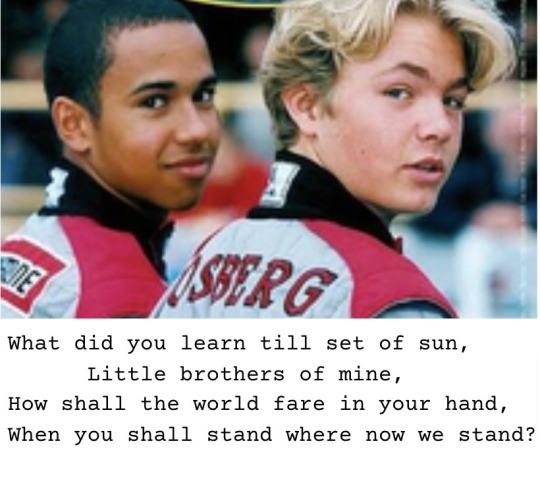
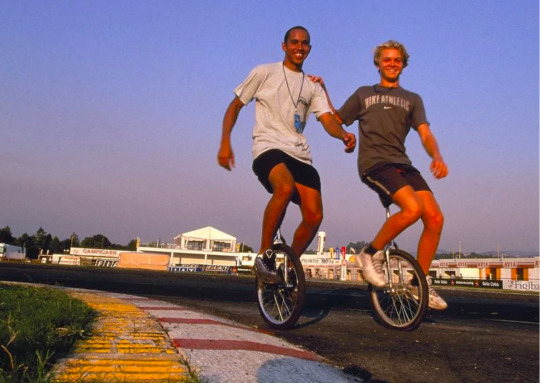












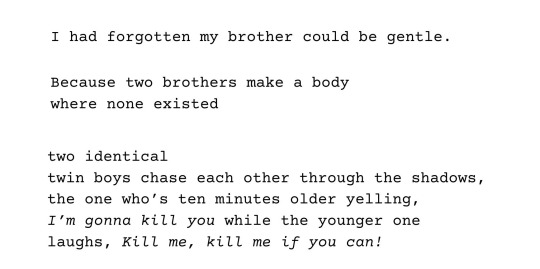


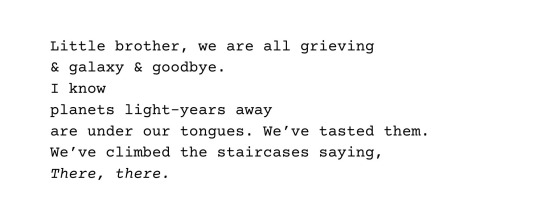



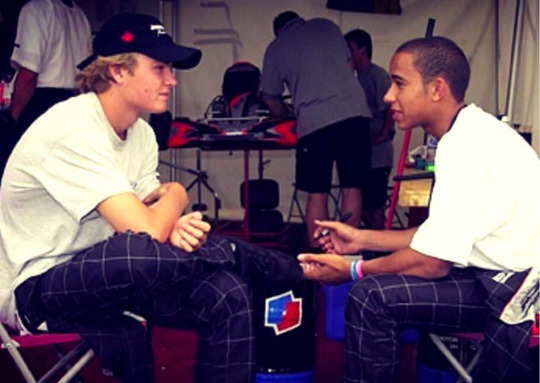



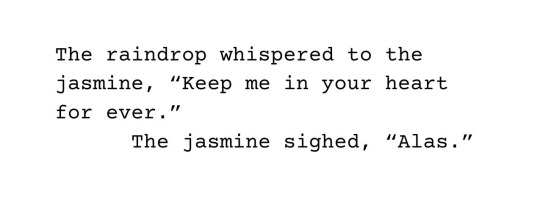


Little brothers of mine
The Guides -- Margaret Widdemer [x] // On Speaking Quietly with My Brother -- Jay Deshpande [x] // It Was The Animals -- Natalie Diaz [x] // The Night Before I Leave Home -- Elisa Gonzalez [x] // I Cast It Away, My Body -- william bearheart [x] // My Brothers Mirror -- Donald Platt [x] // Youth -- Tom Sleigh [x] // There, There, Grieving -- Zeina Hashem Beck [x] // Two Set Out On Their Journey -- Galway Kinnel [x] // stray birds -- Rabindranath Tagore [x] // [When night draws on, remembering keeps me wakeful] -- al-Khansāʾ [x] //
and special thanks @blorbocedes for the final LH soundbite gif (screenshot) because i couldn't find it anywhere else
#f1 web weaving#brocedes#lewis hamilton#nico rosberg#lh44#nr6#web weaving#f1 edit#f1blr#parallels#comparatives#f1 web weave#web weave#webweaving#wiz.webweave#what can i say like... brocedes really got me good
65 notes
·
View notes
Text
went to do some #Research on her instagram (hadn't been following her for a long time i regularly purge my insta following count cause it gets too massive) and oof she's being v cringe on there and making bad music
um wtf just learned about the whole chloe chaidez - ariel pink - trump rally - nazi salute kkk outfit bullshittttt. damn i like kitten's music a lot. sucky!! yet again i find myself in the rock and a hard place of 'giving up music i love vs the shitty ass behavior from the music maker' (dw i usually give it up)
#a bunch of ppl i like (sleigh bells. tennis. phoebe bridgers the list goes on) are following her but the only one i see actively interact#ing with her page is sadie from speedy ortiz and woof. girl i thought you were the most radical ever but i guess it's ok if your friends ar#friends with maga shitheads?#(bc tone doesn't come off in writing - i don't mean i thought of her as the most radical ever i mean she presents herself that way)#also chloe made a post on the kitten account late last year stanning for hayley williams. girl i promise she hates your ass!#sadie may not have a clear moral compass but hayley sure does
3 notes
·
View notes
Text
The one thing you can always count on christmas music for: it's ability to enshrine a singer in history. Everyone knows Bing Crosby, and I think he stays timeless because of his many christmas specials and albums. Sure, he was a respected actor, singer and idol to millions. But the christmas music is played globally, ensuring him a spot in history. He's been dead since the 70s, but everyone seems to know him.
Same with Dean Martin, Frank Sinatra, Andy Williams, Perry Como, Nat King Cole, etc. A lot of these old crooners had respectable musical careers, but we seem to primarily remember their christmas stuff. The Christmas music stays timeless, and enshrines them in cultural history. If I were a singer, I'd only do Christmas albums. Not just because Christmas music is timeless and a sure win, but also because it's relaxing and soothing. Jingle Bells, Silver Bells, Sleigh Ride, Christmas in Killarney, White Christmas, The First Noel, these songs all have a cheer to them. They make you feel better about yourself. I love Christmas music.
#christmas#christmas music#christmas music really does help enshrine someone in history#i mostly know bing crosby just for his christmas songs#all of which are sung amazingly#but you see my point here#christmas is beautiful and timeless#christmas season#bing crosby#dean martin#frank sinatra#perry como#andy williams#nat king cole#ramblings#music#rambling
13 notes
·
View notes
Text

#my post#Christmas#Christmas songs#Sleigh Ride#John Williams#Boston Pops Orchestra#my music#catalisst#Spotify
5 notes
·
View notes
Text

Santa changes in Australia to a "billy cart" type of sleigh
Skippy and his reindeer type mob, show Santa the way! ... William
2 notes
·
View notes
Text
i just took my final ancient greek exam of the semester yesterday and have been avoiding studying for my microbiology exam all day. so let's talk about these three devastating lines from anne carson's translation of herakles

and by talk about i mostly mean here's a bunch of different translations

Ἡρακλῆς μαινόμενος - Herakles by Euripides, lines 1398-1400
c. 416 BC.
original text in Ancient Greek via the Perseus Digital Library
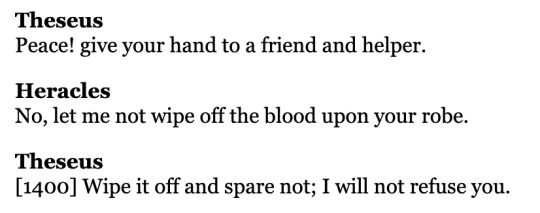
Euripides. The Complete Greek Drama, edited by Whitney J. Oates and Eugene O'Neill, Jr. in two volumes. 1. Heracles, translated by E. P. Coleridge. New York. Random House. 1938.


Herakles translated by Anne Carson in Grief Lessons: Four Plays by Euripides (pg 81-82) 2006
Internet Archive

H of H playbook by Anne Carson (not a direct translation but a reimagining of Herakles, 2021)

Euripides: Herakles, translated by Tom Sleigh, Oxford University Press, 2001
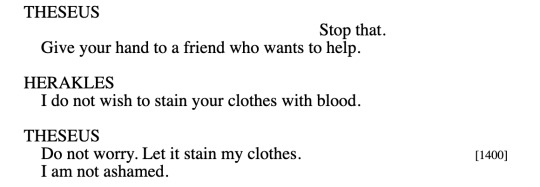
Ian C. Johnston, 2020
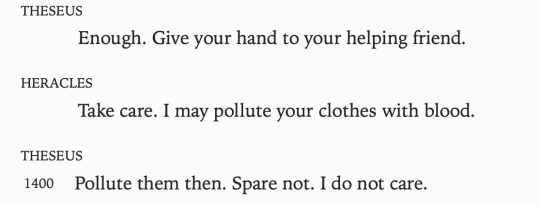
Heracles, translated by William Arrowsmith, from Euripides III: Heracles, the Trojan Women, Iphigenia Among the Taurians, Ion (The Complete Greek Tragedies - Euripides III, University of Chicago Press, 2013 (Arrowsmith's translation itself is from 1956)
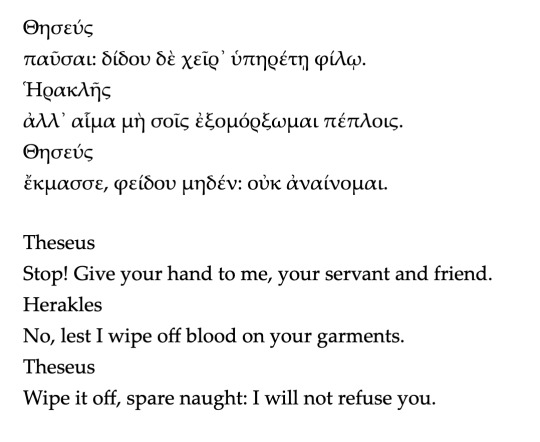
my own translation with notes under the cut
* everywhere that I have used [] I have inserted a word that does not technically appear in the original text.
Theseus Stop! Give [your] hand [to me], [your] servant [and] friend.
*more literally: Stop! Give [your] hand to a servant/helper [and] friend.
* Ancient Greek uses different punctuation, though the : symbol is used roughly the same way as it is in English and exclamation points are not used, verb conjugation in English does not differentiate the imperative mood, which πα���σαι (sg.2.aor.imperat.med-pass) is in, and often the way we show imperative mood in written English is with an exclamation point.
-The word δίδου (sg.2.praes.imperat.act.) is also imperative.
-παῦσαι is said in reference to Herakles’ earlier lines, lamenting his - well, the plot of Herakles.
* The particle δὲ has been omitted from the translation. It’s usually translated as but, and, or then.
* The possessive pronoun your - σός - does not appear but is implied.
* χεῖρ᾽ is the short version of χειρός - hand
* ὑπηρέτῃ φίλῳ are both nouns in dative, here answering the question to whom? The word and - καί - does not appear between the two, likely because poetic language. The word ὑπηρέτῃ can also mean rower, an underling, servant, attendant, assistant, and is often translated here as helper. The word φίλῳ is a form of φίλος - friend, loved, beloved, dear
Herakles No, lest I wipe off blood on your garments.
* Word order changed slightly. The first word is ἀλλ᾽ - poetically shortened version of ἀλλά - usually translated as but, however, here: lest.
* ἐξομόρξωμαι (sg.1.aor.med-pass.) means wipe off or wipe away, but stain is, in my opinion, not an inaccurate translation in regards to the meaning conveyed.
* πέπλοις means any woven cloth, here usually translated as garments, robes or clothes.
* αἷμα means blood and is grammatically either nominative or accusative, probably accusative, μὴ means not and σοῖς is a second person possessive pronoun in plural dative.
Theseus Wipe it off, spare naught: I [do] not refuse [you].
* ἔκμασσε (sg.2.praes.imperat.act.) - wipe it off - is imperative again, so is φείδου (sg.2.praes.imperat.med-pass.) - spare.
* μηδέν I translated as naught as in nothing, οὐκ means not
* ἀναίνομαι is in sg.1.praes.ind. - so present tense would be the most literal translation, ie. I do not refuse you, but the meaning might best be conveyed in English with the use of future tense, ie. I will not refuse you. The word can also mean reject, deny, renounce and disown, or be ashamed. Possible other translations: I don’t deny you; I won’t reject you; I am not ashamed; I won’t renounce you.)
That's all on Herakles, the rest is me rambling about Ancient Greek grammar for interested parties (mostly myself). If I could put a second cut here, I would.
Some further notes on the grammatical cases and verb conjugation. You'll have noticed that I've followed verbs with parentheses with some abbreviations. I'll break those down a little for those not in the know: unlike English, Ancient Greek has different endings to denote the person in verb conjugation - 1.sg being first person singular as in I, and so on with 2.sg - you, 3.sg he/she/singular they, 1.pl - we, 2.pl - plural you, 3.pl - plural they. There's also technically an extant dual form in some texts (when speaking of a pair of two) but it's rare. Ancient Greek conjugation also varies a lot by the temporal tense, the ancient greek times are present (praesens - praes.), future (futurum and futurum III), imperfect (imperfectum), strong and weak aorist (aor. - this one doesn't exist in any modern languages and is a bit of a jeremy bearimy but is usually translated as either present or past, depending on the context), perfect (perfectum), and pluperfect (pluscuamperfectum) - all of these except imperfect and pluperfect (which only have indicative forms) then have various forms - indicative (ind.), infinitive (inf.), imperative (imperat.), optative (opt.) and conjunctive (coni.). Verbs also have an active (act.) and middle and passive or active and mediopassive (med-pass.) form, except some verbs only have mediopassive versions and are thus translated as either active or mediopassive depending on the context. This is as complicated (and fun!) as it sounds. (editors note: the fun! was not sarcastic - i am a medstudent who hasn't had to take two semesters worth of classes on this, nor do i have to keep taking ancient greek next semester but i'm going to)
Nouns in Ancient Greek also have grammatical cases, nominative, genitive, dative, accusative and vocative, as do adjectives. They also have genders, and adjectives of course have positive, comparative and superlative (good, better, best) forms.
Ancient Greek also uses a lot of participles, which is like a noun-ified verb. Participles are also a concept in English, just - a lot simpler in English, and also I think in English a participle is a verb that has some characteristics of an adjective or noun, whereas in Ancient Greek participles and verbal adjectives are separate concepts. Participles are derived from verbs and have the same grammatical cases as nouns, nominative, genitive, dative, accusative and vocative, and singular and plural versions, and have three genders, masc., fem. and neut. - they also have active and mediopassive forms, and differ based on the temporal conjugation of the verb, retaining its augment, reduplication, characteristic added letters (for example σ in the future tense, and θη + σ in the passive future) or lack thereof, also they can have different endings or roots based on the tense. So, yeah, "conjugate and translate this verb in part.fut.pass.sg.masc.gen. and II aor.part.act.sg.acc.fem." is what a test question might look like at my level of studying ancient greek.
Sentence constructions also differ from English, some of the most common ones are AcI, NcI, genitivus absolutus. accusativus duplex and nominativus duplex. They also will often skip words (particularly the verb to be they often deemed unnecessary) and poetic language is its own can of worms with its own theoretical dialects and prosody.
All of this is like, barely scratching the surface, there's also a bunch of different dialects, stuff varies by era, all of the noun cases have like, a Bunch of different uses, and it's all terribly interesting.
#anne carson#should i do#not to me not if it's you#next?#ancient greek#ancient greece#philology#heracles#herakles#euripides#h of h playbook#grief lessons: four plays by euripides#web weaving
52 notes
·
View notes
Text




"The History of Sleigh Bells"
Jingle Bells Rock! As always they too have a history relating to Christmas.. here's the story.
*Horse-bell Heyday: 1800s
In the 1800s, horse bells were used for wintertime recreation as well as for work. Winter "pleasure drives" required fashionably warm clothes, handsome sleighs, well-groomed horses, and nicely polished harnesses and bells. This strong association of horse bells with Christmas and winter fun led people to gradually call them "sleigh bells" instead.
Sleighbells became a part of popular culture, leading to songs, stories, and poetry about them. The most popular example is the song
"One Horse Open Sleigh", known today as "Jingle Bells". It was written by James Lord Pierpont in 1857.
Another example, not as well known, is the poem "Sleigh Bell" written by Yakov Polonsky in 1854.
The U.S. sleigh bell industry began to grow strongly in the early 1800s. William Barton started the sleigh bell industry in East Hampton, Connecticut, USA, about 1810. Barton's willingness to teach the sleigh bell trade to others was a key reason why East Hampton earned worldwide fame as "Belltown" or "Jingletown" in the 1800s.
"...The manufacturing enterprise of East Hampton and its general prosperity are traceable to no one man more than to William Barton...
He came to East Hampton in 1808 and began making handbells and sleigh bells. Others learned the trade with him, and afterwards engaged in the same business...."
Other individuals contributed to East Hampton's fame later in the century:
"...By the end of the 1800s, East Hampton bell maker N. N. Hill had developed a process of stamping sleigh bells out of sheet metal... While casting bells, two skilled workmen could make about 500 bells in one day. with stamping, one man can produce 25,000 bells!...
"In 1839, the total number of bells manufactured in East Hampton was reported at about 14,000 sleigh bells and house bells combined. Only 11 years later, an 1850 industrial census reported the annual total of sleigh bells made in town jumped to '245,000 dozen,' almost three million bells....
"By the late 1800s, the many bell makers of East Hampton provided 90% of the world's sleigh bells...."
Bell manufacturers in the East Hampton area during the 1800s included William Barton, sons Hiram and Hubbard Barton, Bevin Bros. Mfg. Co., Gong Bell Co., East Hampton Bell Co., N. N. Hill Brass Co., Starr Brothers, Veazey & White, and W. E. Barton & Clark (W.E. was William Barton's grandson.)
East Hampton manufacturers, while prolific, were not the only ones making bells in the U.S. By the late 1800s, bell foundries throughout the East and Midwest produced a dizzying variety of sleigh bells and many different ways to put sleigh bells on horses and their vehicles. That's the Jinglee story!
12 notes
·
View notes
Text

Hello, everyone! I'm finally getting my stuff together and really gonna work towards doing (and finishing) a writing event! I haven't done a Christmas event yet on this blog, so I'm really excited to be sharing! I want to keep everything a surprise, but I want you guys to be able to also know what fics will be coming (if you choose to).
I will be writing a character from every fandom that I am currently writing for, and that I have written in the past, for this event!! It's time to dust off those blorbos and bring them back!
IF YOU DO NOT WANT TO BE SPOILED, DO NOT CLICK BENEATH THE READ MORE! I know the purpose of Advent is to countdown the days to Christmas (and usually each day has a surprise), but bear with me <3 it's acting as my schedule too hehe<3
DAY 1: Sleigh Ride, Sam Winchester DAY 2: Mulled Wine, Guy of Gisborne DAY 3: Candy Canes, Dean Winchester DAY 4: Surprise Gift, Tanjiro Kamado DAY 5: Frozen Feet/Hands, Arthur Morgan DAY 6: Snowball Fight, Toshiro Hitsugaya DAY 7: Snow Angels, Alexander 'Sasha' Kozachenko aka Buddy DAY 8: Christmas Cookies, Shoto Todoroki DAY 9: Mistletoe, Grimmjow Jaegerjaquez DAY 10: Wish List, Ken 'Okarun' Takakura DAY 11: Heartfelt Present, William Lennox DAY 12: Evergreen Decor, Izuku Midoriya DAY 13: Christmas Cards, Geralt of Rivia DAY 14: Festive Jewelry, Thorin Oakenshield DAY 15: Christmas Movies, Chris Redfield DAY 16: Hanging Ornaments, Sukuna DAY 17: Rosy Cheeks, Hawks DAY 18: Christmas Stocking, Ichigo Kurosaki DAY 19: Hot Chocolate, Toji Fushiguro DAY 20: Wrapping Paper, Dabi DAY 21: Knitted Mittens, Luis Sera DAY 22: Lit Fireplace, John Marston DAY 23: Gingerbread House, Castiel DAY 24: Warm Clothes, Bakugo Katsuki DAY 25: CHRISTMAS KISS, LEON KENNEDY!! MERRY CHRISTMAS!!!
#Red Dead Redemption#The Witcher#Bleach#My Hero Academia#DandaDan#Jujustu Kaisen#Transformers#Supernatural
11 notes
·
View notes